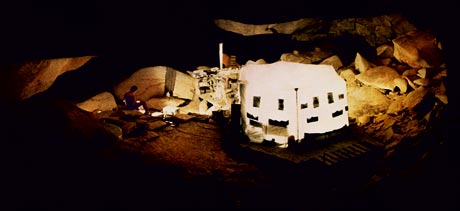2010 study
Rodrigo Noseda, Vanessa Kainz, Moshe Jakubowski, Joshua J. Gooley, Clifford B. Saper, Kathleen Digre, Rami Burstein
The perception of migraine headache, which is mediated by nociceptive signals transmitted from the cranial dura mater to the brain, is uniquely exacerbated by exposure to light. Here we show that exacerbation of migraine headache by light is prevalent among blind persons who maintain non-image-forming photoregulation in the face of massive rod/cone degeneration. Using single-unit recording and neural tract-tracing in the rat, we identified dura-sensitive neurons in the posterior thalamus, whose activity was distinctly modulated by light, and whose axons projected extensively across layers I through V of somatosensory, visual and associative cortices. The cell bodies and dendrites of such dura/light-sensitive neurons were apposed by axons originating from retinal ganglion cells, predominantly from intrinsically-photosensitive retinal ganglion cells – the principle conduit of non-image-forming photoregulation. We propose that photoregulation of migraine headache is exerted by a non-image-forming retinal pathway that modulates the activity of dura-sensitive thalamocortical neurons.
Migraine is a recurring, episodic neurological disorder characterized as a unilateral, throbbing headache that is commonly associated with a variety of other symptoms (e.g., nausea, vomiting, irritability, fatigue). Migraine pain is thought to originate from chemical irritation of the meninges, which leads to transmission of nociceptive signals from the dura mater to the brain via the so-called trigeminovascular pathway. The first- and second-order neurons in this pathway are, respectively, sensory neurons in the trigeminal ganglion that project centrally to the spinal trigeminal nucleus (SpV), and dura-sensitive neurons in laminae I and V of SpV that project to the posterior thalamus. Prolonged neuronal activation during a migraine attack is thought to induce peripheral and central sensitization along the trigeminovascular pathway, which explains the throbbing of headache and the accompanying scalp and neck-muscle tenderness, and whole-body cutaneous allodynia.
More about this study can be found at this link
